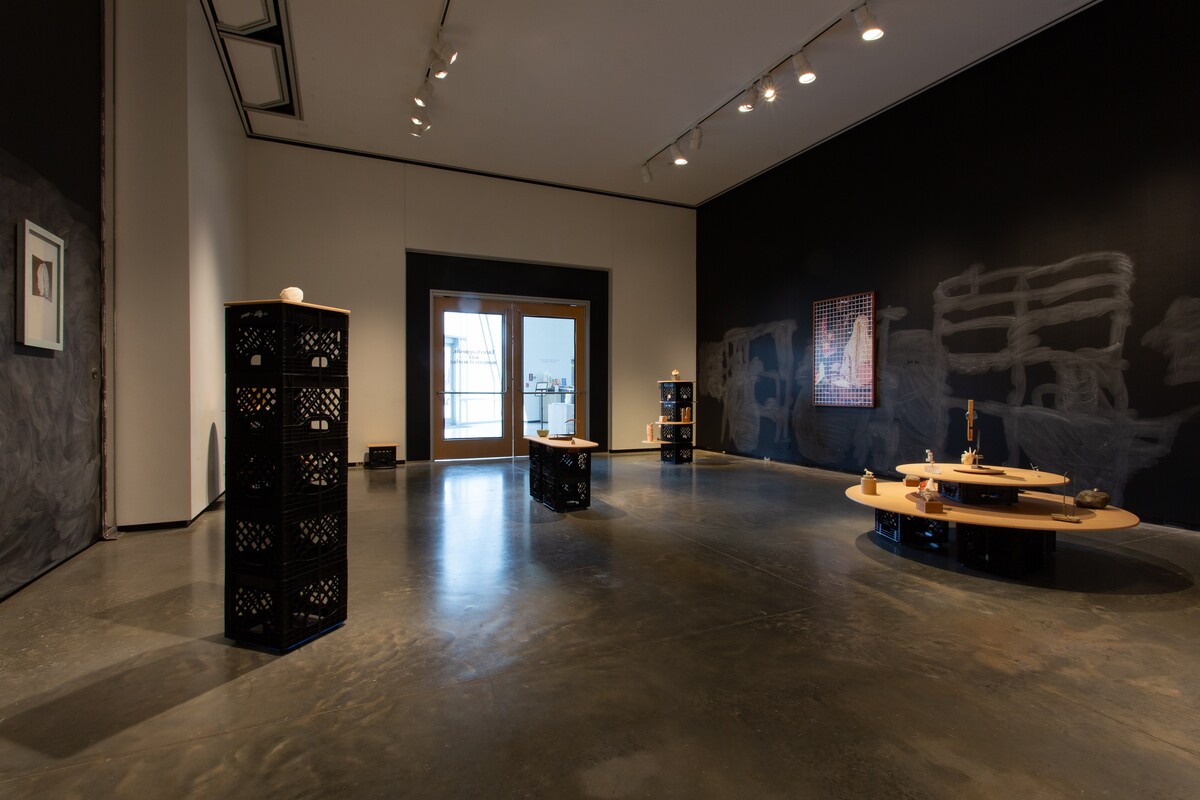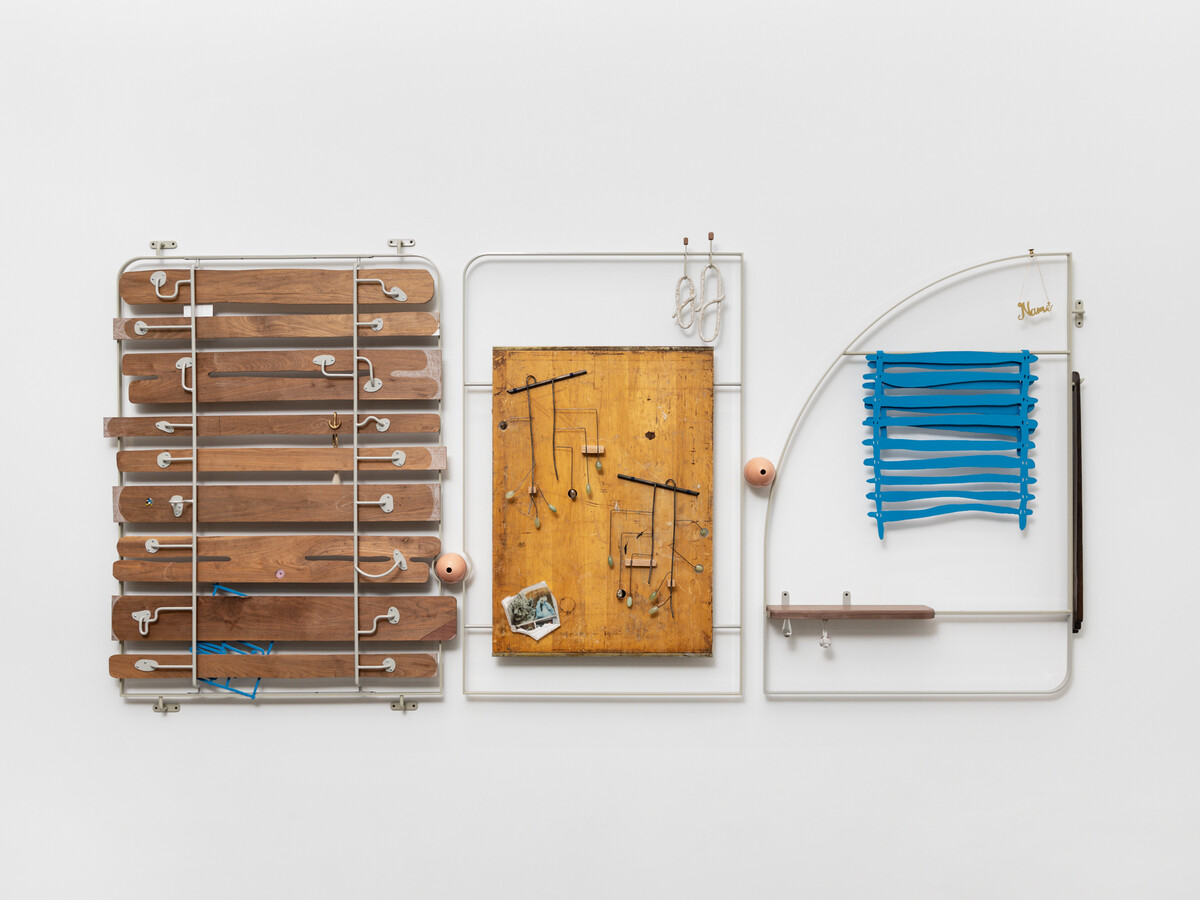
Alex Chitty’s exhibition, Entirely opposite, with moments of overlap brings together sculptural and photographic work spanning a decade of the artist’s practice, including a series of small tabletop works, or Character Studies, that echo the themes and motifs in a central triptych piece.
Steeped in the histories and conventions of both art and design, Chitty’s work references art historical traditions such as still life painting and trompe l’oeil—a term that translates to “trick the eye” and describes the illusion of three-dimensional objects rendered on a flat surface—and incorporates materials like cast bronze and light-colored hardwood, ubiquitous in mid-century modern furniture design. With an acute awareness of the way history and culture are embedded in objects and form, Chitty harnesses these traditions in service of a visual language distinctly her own.
Chitty’s objects are anything but static—they shift depending on context and display, they trick the eye, emulate and appropriate. They become pseudo-things. The modernist design principle, “form follows function” is turned on its head, standard milk crates designed with one purpose in mind given new life as exhibition display furniture. By pointing to all the ways objects shift and deceive, Chitty poses the question: How do we know what something is, and by extension, how do we know anything at all?

Working between object and image, Chitty has long been preoccupied with the way representation both expands our understanding of reality while at the same time distorting it. Her exhibition is full of stand ins for other things: a Donald Duck figurine, a marble head with a removeable and interchangeable face, a crumpled-up bag once containing Cuban sandwich flavored potato chips. Photographs of photographs emphasize the medium’s materiality and context, undoing its presumed objectivity. Though playful, her work points to the slipperiness of representation as the basis of various forms of knowledge, be it scientific, cultural or historic.
A prominent case in point underpinning Chitty’s work is the minimization of women in the history of modern design and architecture, despite ample evidence of their many contributions to the field. Drawing on this history and her own experience growing up in a family of makers, Chitty’s work looks at the ways people and things are represented in their absence; at the weird, slanted versions of reality that come about as a result.
But more than offering a corrective to the past, Chitty’s work opens up spaces of possibility within the everyday. It invites us not only to reexamine our assumptions, but to see the world around us as constantly being made. To design for a world that doesn’t yet exist.


